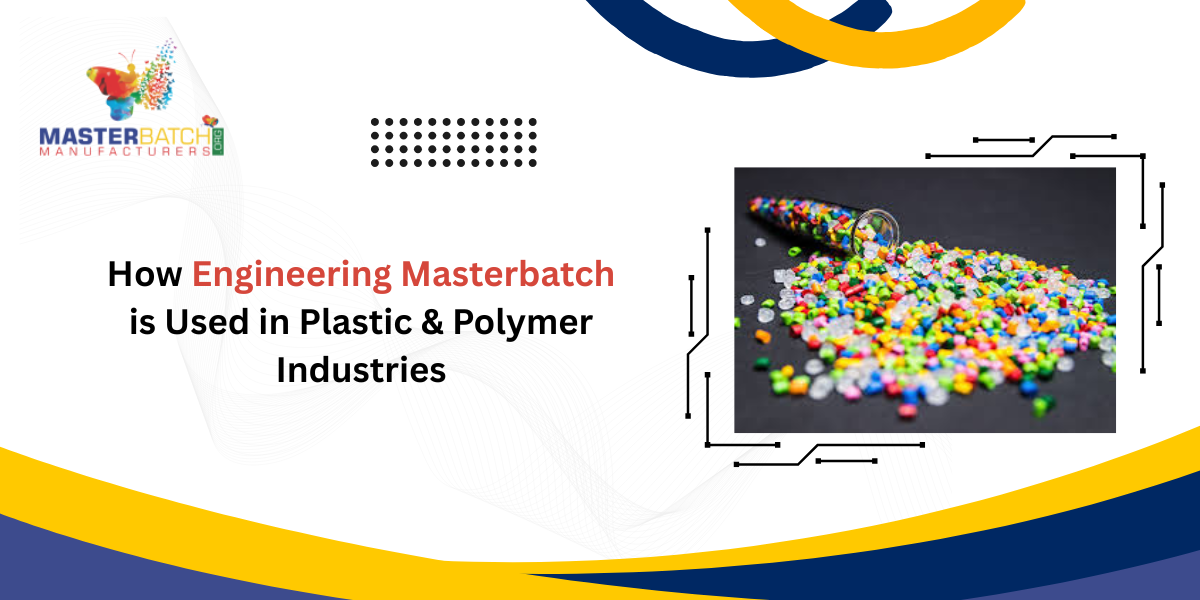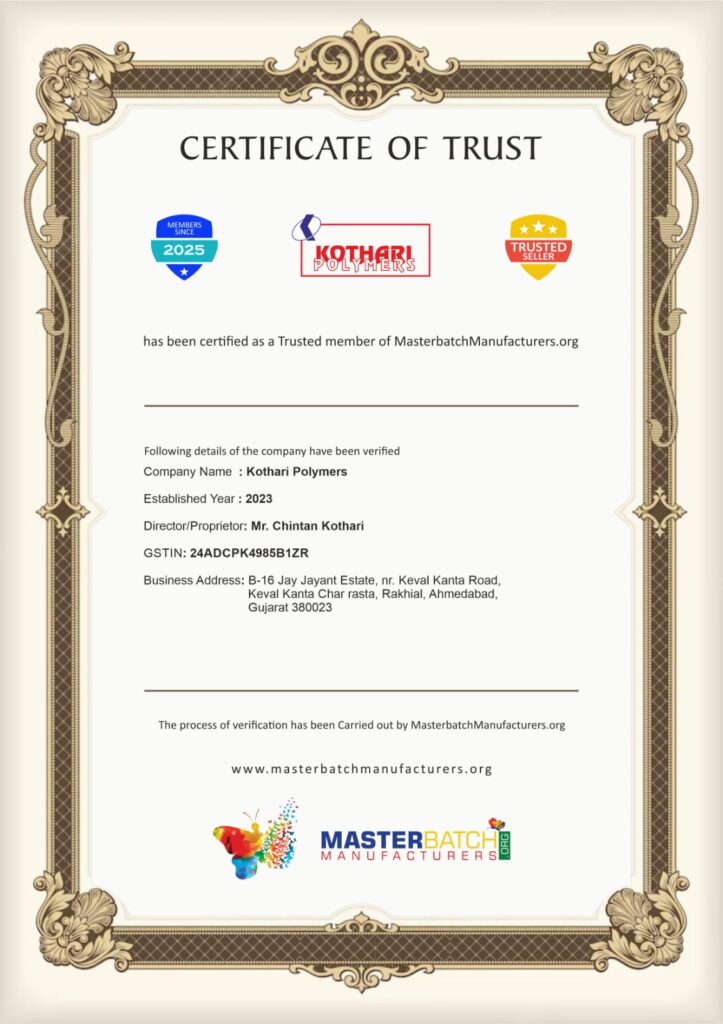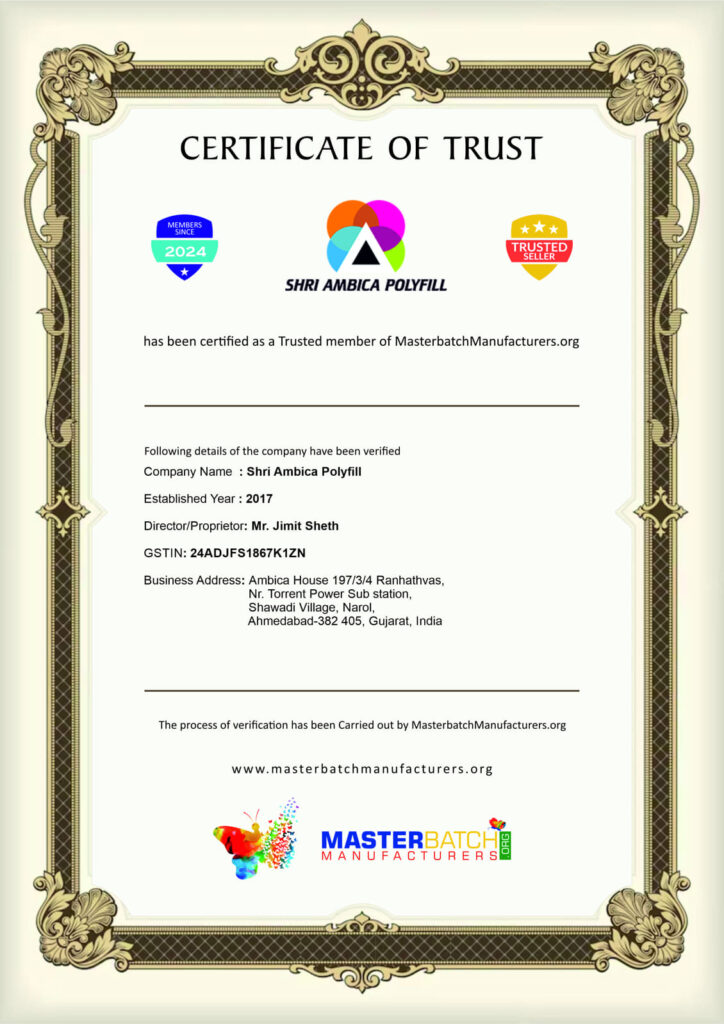Let’s be honest, yaar. Plastics are everywhere – bottles, pipes, car parts, gadgets. We touch them daily. But have you ever thought about what actually makes them strong, colorful, and durable? That’s where an Engineering Masterbatch comes in.
Honestly, it’s the secret stuff manufacturers use to improve plastic. Chill, I’ll explain it simply.
What is an Engineering Masterbatch?
To be frank, it’s a concentrated mix of pigments, fillers, and additives mixed into raw plastic.
- Makes plastics stronger and longer-lasting
- Adds colors or features like flame resistance, UV protection, or anti-static effects
- Makes sure these features spread evenly during molding or extrusion
I mean, think of it like magic dust turning ordinary plastic into something high-performance. Without it, products could wear out fast or look boring.
Uses in Plastic & Polymer Industries
An Engineering Masterbatch is super versatile. Honestly, it’s not just for one type of product.
- Automotive Parts: Dashboard panels, bumpers, trims. Adds strength and heat resistance.
- Electronics Casings: Phones, laptops, appliances get anti-static and durability benefits.
- Pipes & Fittings: UV resistance and longer life for outdoor use.
- Packaging Materials: Brighter colors and better barrier properties, especially for food-safe plastics.
- Industrial Components: Gears, machinery covers, and protective housings.
Mini story: A friend’s startup tried a special masterbatch for eco-friendly bottles. No kidding, the bottles lasted much longer than normal and clients loved them.
How It Works
Honestly, it’s simple:
- Mixing: Masterbatch blends with raw plastic pellets
- Heating: The mixture melts
- Shaping: Formed via extrusion or molding
- Cooling: Plastic solidifies evenly
Pro tip: Pick the masterbatch type depending on what you are making – UV-resistant for outdoors, flame-retardant for electronics, etc.
Key Benefits of Using an Engineering Masterbatch
- Colors? Always consistent. Seriously, no surprises.
- Makes plastics tougher and a bit flexible – lasts longer, you know.
- Handles heat, UV, and chemicals like a champ.
- Saves time and effort. No need to add pigments separately.
- Eco-friendly options exist so you can be kind to the planet.
Honestly, good masterbatch keeps you from trouble later – less waste, fewer headaches.
Works quietly in the background, but trust me, products feel premium.
Tips for Choosing the Right Engineering Masterbatch
- Ensure it fits your polymer type (PVC, ABS, HDPE, etc.)
- Work with suppliers with proven quality
- Decide which additives you need – flame-retardant, UV-protection, anti-static, etc.
- Test small batches first
- Mini advice: Don’t skip testing, yaar. Even a tiny mismatch can ruin a batch.
- Mini tip: Handle carefully during mixing. A good masterbatch keeps your product top-quality and long-lasting.
Real-Life Applications of an Engineering Masterbatch
Honestly, yaar, check your car – dashboards, bumpers, trims. All that plastic uses masterbatch.
- Electronics? Laptops, phones, even appliances rely on it. Colors stay bright, and they last longer.
- Outdoor stuff like garden pipes, plastic furniture, and toys? UV-resistant masterbatch keeps them from fading or cracking.
- Food packaging uses it too – keeps colors vibrant and plastics safe.
- Industrial parts like gears and machine covers? Stronger and more durable thanks to masterbatch.
I mean, you barely notice it, but without this stuff, plastics would wear out fast and look dull.
Final Thoughts
Let’s face it, An Engineering Masterbatch is the hidden hero behind durable, colorful, and high-performing plastics. From car parts to packaging, it keeps products reliable and professional-looking.
Honestly, if you’re in the plastics or polymer industry, don’t skip investing in a good masterbatch. It makes production smoother and products better.
Check out our premium Engineering Masterbatch and place your order now for the best quality at best prices!
Stay connected with us on Instagram and Facebook for the latest updates and offers.
FAQs About an Engineering Masterbatch
Q1: Can anyone use an Engineering Masterbatch?
Honestly, yes. Just make sure it matches your plastic type and purpose.
Q2: Is it expensive?
To be frank, the upfront cost is higher, but it saves money long-term because products last longer and fewer rejects.
Q3: Can it change the color of plastic?
Be kind, yes. Bright, consistent colors are one of its main advantages.
Q4: Does it make plastics stronger?
Seriously, yes. That’s why automotive and industrial parts rely on it.
Q5: How much masterbatch should I use?
Depends on your needs. Usually 1–5% of total plastic weight. Start with small test batches, yaar.






